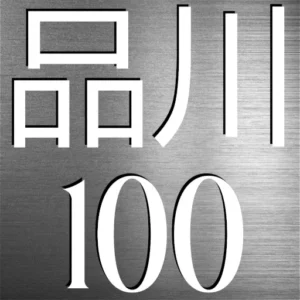Temple Gate and Unknown Tombs in Tenmyokokuji Temple – 天妙国寺の山門と無縁仏
🏛️ Tenmyokokuji Gate – A threshold through time
Tenmyokokuji Temple (天妙国寺), once known as Myokokuji, is one of Shinagawa’s most historic temples. Founded in 1285 by Tenmoku Shōnin, a direct disciple of Nichiren, it has long stood as a spiritual landmark. The current gate was originally constructed in the 15th century by the wealthy merchant Suzuki Michitane and his son. It was part of a grand seven-building complex, reflecting the temple’s wealth and status during the Muromachi period.
The temple gate has witnessed centuries of visitors, pilgrims, and powerful figures. Tokugawa Ieyasu stayed here before entering Edo in 1590. His successors followed—Hidetada twice, and Iemitsu an astonishing 44 times. Their visits are recorded in the temple’s treasured documents, including the Gosandai Narinokaku.
🍀 Muen-botoke – Forgotten but remembered
On the north side of the main hall stands the Muen-tō (無縁塔), a solemn monument to the Muen-botoke (無縁仏) — those who died without relatives or descendants. In Buddhist tradition, such spirits risk being forgotten. Yet at Tenmyokokuji, they are honored with dignity. The temple invites visitors to offer prayers, ensuring these souls remain part of the living world’s memory.
This quiet corner of the temple grounds reflects Buddhist compassion and respect for all beings, especially those with no one else to remember them. It is both a spiritual landmark and a moral statement.
📱 Echoes of the Past – A temple through centuries
The temple belongs to the Kempon Hokke-shū (顕本法華宗), a branch of Nichiren Buddhism. It has endured war, fire, and change. In the 15th century, the temple was protected by the powerful Hōjō clan. Later, it received special privileges under the Tokugawa shogunate, including land grants and official recognition.
Today, Tenmyokokuji remains active. It holds annual festivals like the Gokaishiki in mid-October, where worshippers carry lanterns from Shinagawa Inn to the temple while chanting the Odaimoku. On New Year’s Eve, visitors line up for the Joya no Kane — ringing the temple bell to welcome the new year.
📿 Temple Notes
- Sect: Kempon Hokke-shū (Nichiren Buddhism)
- Principal Deity: Nichiren
- Founded: 1285 (Kōan 8) by Tenmoku Shōnin
- Major Features: Grand gate, Muen-tō monument, Gosandai records, historic bell
- Cultural Role: Site of Tokugawa patronage and Shinagawa lantern festivals
🧭 Visitor Information
Address: 2-8-23 Minamishinagawa, Shinagawa City, Tokyo 140-0004, Japan
Best season: Year-round
Admission: Free
Official Info: https://tenmyokokuji.jp
Please be respectful when visiting. This is an active religious site and a place of quiet reflection.
Where is it?
| what3words | ///push.boasted.cares |
| latitude longitude | 35.6119905 139.7432586 |
| Nearest station(s) | Aomono-Yokocho, Shimbamba |
| Nearest public conveniences | Possibly on the premises. In doubt use the one at the station before you visit. |
Show me a sign.

Double sign and they went for the side-by-side approach. “unknown tombs” is a short but inaccurate interpretation of muenbotoke (無縁仏) – which is “person (or their spirit) who dies with no one to tend their grave.” But I admit, it’s not easy to find an English equivalent that would easily fit. Memorial for the abandoned dead?
Withervee says…
You don’t need a guidebook to feel something here. Just walk through the old wooden gate, and pause. Even if you don’t know their names, the Muen-botoke call for a moment of quiet respect.
📜 Muen-tō: A local ghost story: One winter night, a seaweed farmer named Niemon awoke from a strange dream. He had seen a ghostly man in a dark kimono, drenched and silent, sitting in the corner of his room. The man’s chest was bare, his hair wild, and his face pale as ice. His lifeless eyes stared at Niemon and his lips moved: “I am trapped in your seaweed culch… help me.” Niemon shook off the dream—only to have it again. Disturbed, he set out to sea before dawn. Under a cold moon and still skies, he rowed quietly through Shinagawa Bay. The water lapped against the boat. At his seaweed farm, nothing seemed wrong—until the oar struck something odd. Looking down, he saw a severed human head entangled in his seaweed. The mouth twisted. The eyes stared right back at him. Horrified but steady, Niemon lifted the head into the boat. He later brought it to Tenmyokokuji Temple, where it was respectfully enshrined at the Muen-tō — a resting place for those with no one left to mourn them. And that’s how one forgotten soul, adrift in the bay, found peace.
Site Character
- Lifestyle 生活 (Seikatsu): ❌
- Historical Significance 歴史 (Rekishi): ✔️
- Atmosphere/Natural Features 風土 (Fūdo): ✔️
Who in their right mind would vote for this?
- Local Nichiren Buddhists
- History buffs
- Temple photographers
- Philosophical wanderers
- Festival fans
Further reading
The folktale (japanese) documented at Shinagawa City Library

